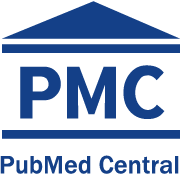Estimated conditions to control the COVID-19 pandemic in pre- and post-quarantine scenarios in Peru
DOI:
https://doi.org/10.17843/rpmesp.2020.372.5405Keywords:
Coronavirus Infection, Outbreaks, Surveillance, Decision ModellingAbstract
Objectives: To determine the probability of controlling the outbreak of COVID-19 in Peru, in a pre- and post-quarantine scenario using mathematical simulation models. Materials and methods: Outbreak simulations for the COVID-19 pandemic are performed, using stochastic equations under the following assumptions: a pre-quarantine population R0 of 2.7 or 3.5, a post-quarantine R0 of 1.5, 2 or 2.7, 18% or 40%, of asymptomatic positives and a maximum response capacity of 50 or 150 patients in the intensive care units. The success of isolation and contact tracing is evaluated, no other mitigation measures are included. Results: In the pre-quarantine stage, success in controlling more than 80% of the simulations occurred only if the isolation of positive cases was implemented from the first case, after which there was less than 40% probability of success. In post-quarantine, with 60 positive cases it is necessary to isolate them early, track all of their contacts and decrease the R0 to 1.5 for outbreak control to be successful in more than 80% of cases. Other scenarios have a low probability of success. Conclusions: The control of the outbreak in Peru during pre-quarantine stage demanded requirements that were difficult to comply with, therefore quarantine was necessary; to successfully suspend it would require a significant reduction in the spread of the disease, early isolation of positives and follow-up of all contacts of positive patients.Downloads
Download data is not yet available.
Downloads
Published
2020-04-28
Issue
Section
Original Article
License
Copyright (c) 2020 Revista Peruana de Medicina Experimental y Salud Pública

This work is licensed under a Creative Commons Attribution 4.0 International License.
How to Cite
1.
Huamaní C, Timaná-Ruiz R, Pinedo J, Pérez J, Vásquez L. Estimated conditions to control the COVID-19 pandemic in pre- and post-quarantine scenarios in Peru. Rev Peru Med Exp Salud Publica [Internet]. 2020 Apr. 28 [cited 2025 May 9];37(2):195-202. Available from: https://rpmesp.ins.gob.pe/index.php/rpmesp/article/view/5405




























